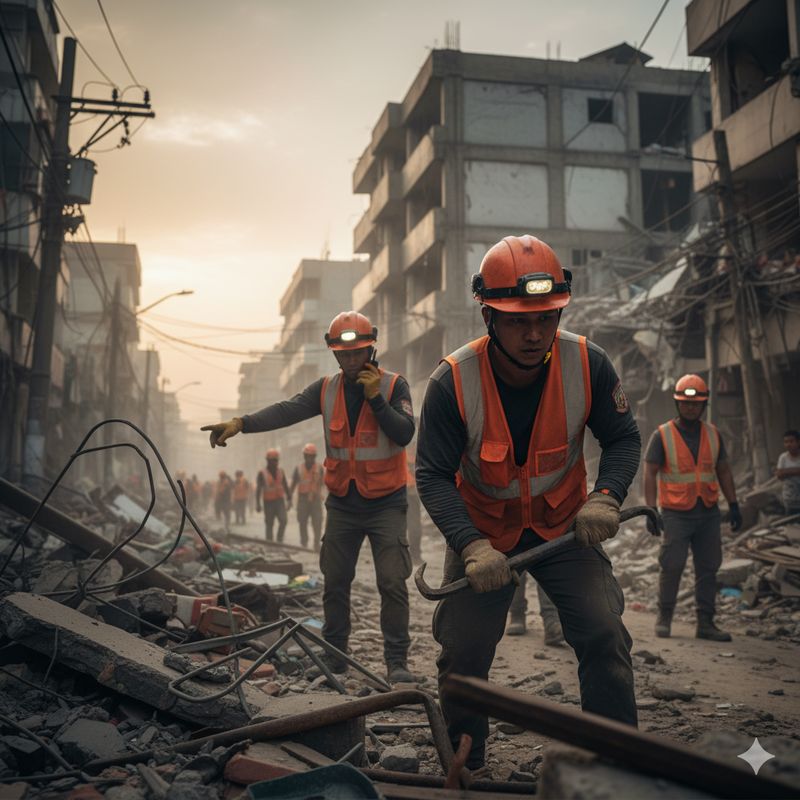LGUs and civic groups in various parts of the world, including the Philippines, are turning to emergency kits that are good for 72 hours to help people cope with and survive earthquakes.
The magnitude 6.9 earthquake in Cebu highlights the vulnerability of the Philippine population when disaster strikes. Residents of areas located on higher ground may be spared from floods and heavy rains, but earthquakes do their damage anywhere. They are the most unpredictable disaster of all.
Earthquake victims suffer Injuries from falling debris, get trapped in rubble, are isolated in areas where there is no electricity or access to food or water. No electricity also means no light and no way to charge phones to reach loved ones. Homes and possessions may be destroyed so people are left to the mercy of the elements, unprotected even from dengue-carrying mosquitoes. Soon enough, post-traumatic stress, anxiety, and depression will set in.

Why a 72-hour emergency kit? Because that time span is crucial after a major disaster. It can take up to three days for emergency services to arrive. Self-sufficiency is necessary for survival and to lessen the strain on overwhelmed responders. During those 72 hours people need food, water, shelter, medical supplies and ways to communicate as best they can.
Californila.com, a Filipino-owned company based in California, USA, a place also always at the ready for The Big One, has produced 72-hour emergency kits for disaster-prone and disaster-threatened areas around the globe.
Ishka Villacisneros, Filipina founder and owner of Californila, who is also an expert in emergency and disaster response, has now introduced the world-class emergency kits to the Philippines. Tailor-made for both LGU and private home use, the emergency kits are specifically tailored for earthquake survival. They contain communication and lighting tools, a first aid and medical kit, non-perishable food and water supplies, personal hygiene and sanitation essentials, shelter and warmth provisions (tent, sleeping bags, emergency blankets and ponchos.
They also contain a multi-tool pocket knife, fire starters, rope, a 115-hour candle, dust mask, 3 liters of water per person, moist towelettes, a 2-way radio, a whistle, a GPS device and other communication and navigation tools.
“In the United States, emergency kits are a common household necessity. The recent tragedy in Cebu highlights the urgent need to strengthen disaster preparedness in the Philippines. Natural disasters, like earthquakes, can leave families without essential needs such as food, water, and shelter,” said Villacisneros. “The experience of Cebu’s victims highlights the need for proactive measures to ensure safety and security when disaster strikes.”
Villacisneros said LGUs and civic groups can provide emergency kits for the community. “Emergency kits can be customized to suit specific individual or group needs. For instance, they can be made to include specific medications and other unique personal needs. The contents can be adjusted to what will best apply to the local situation and the go-bags are sturdy enough to withstand harsh environments.”
“Knowing that you have all the emergency solutions at your fingertips gives you peace of mind when emergencies happen. During these uncertain days of climate change, everybody is encouraged to avail of or make one’s own emergency kit,” she added.
Californila.com, a personal shopping company in the US, provides Filipinos worldwide with emergency kits and other global quality products from the US, minus the expensive intermediary fees and mark-ups.
![[AI-Generated for Visuals] Distribution of Aid Packs](https://gadgetsmagazine.com.ph/wp-content/uploads/2025/10/AI-Generated-for-Visuals-Distribution-of-Aid-Packs-696x696.jpg)